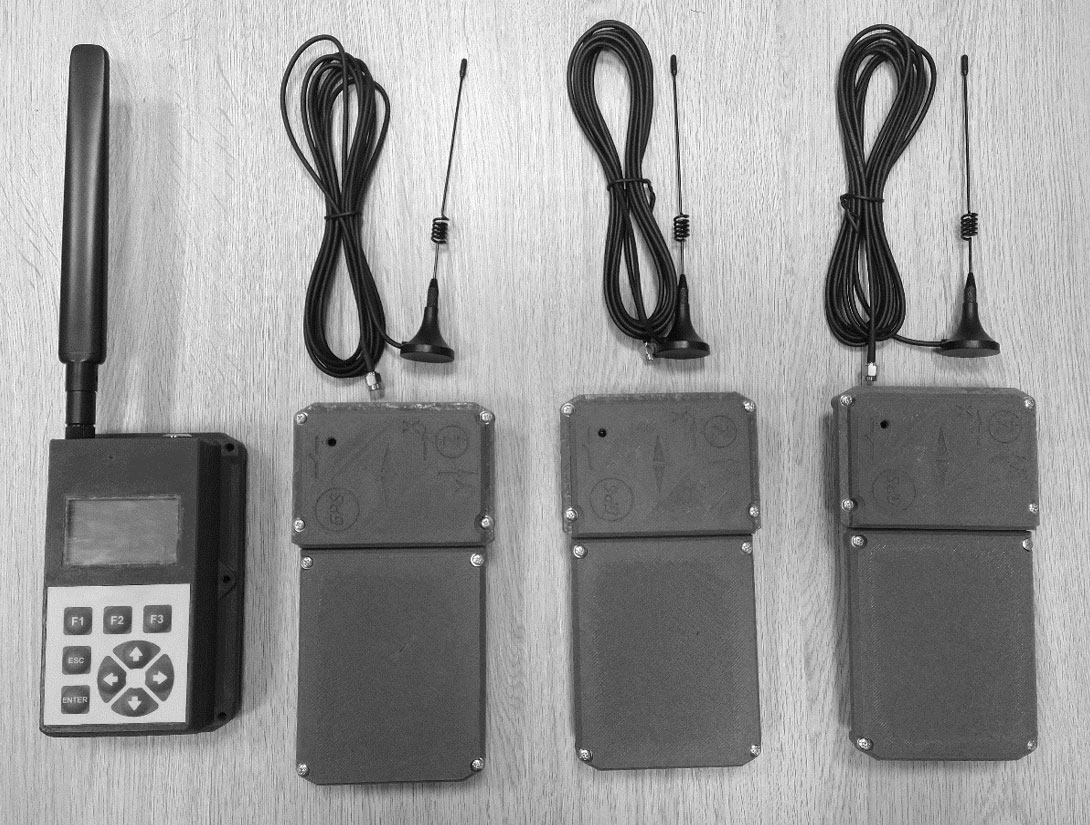Seismo acoustic intelligence complex of remote monitoring of mobile objects
The essence is to develop a seismic reconnaissance complex that implements the ability to remotely monitor noise sources, which, regardless of environmental conditions, in passive mode, provide reception of the spatial vector of the seismic field, which allows to identify and classify objects of noise.
As a result of research work the substantiation of expediency and efficiency of use of decision-making system on the basis of neural networks in combination with vector-phase methods of reception and processing of seismoacoustic signals is carried out. Based on the theoretical analysis of the operation of vector receivers, the optimal structure of the complex is selected, and the main measuring units of the seismic acoustic system based on three coordinate sensors of oscillating velocity are developed. The characteristic features of the acoustic field from different sources of the acoustic signal and their change in time and space during propagation in the near zone are determined. Methods of analysis of acoustic field characteristics have also been developed, which will provide detection and analysis of acoustic signals from various sources in conditions of significant noise, and allow to effectively determine the main characteristics of the acoustic signal and its source.
An experimental model of the measuring system was developed to provide covert remote monitoring of seismic acoustic signal sources and to solve the problem of organizing mobile protection of various objects from unauthorized access, as well as to study seismic acoustic waves propagating in solid medium (soil, engineering structures). Field studies of the experimental sample of the system were carried out and the main informative characteristics of the acoustic field were added, which take into account the inhomogeneities of the propagation medium. The test results of the prototype of the system proved the possibility of determining the parameters of the source from one point with a given accuracy. Based on the test results of the experimental sample of the complex, scenarios for the analysis of seismic acoustic signals were developed using the data obtained as a result of the study on the peculiarities of the behavior of vector and scalar components of acoustic fields. The results of experimental studies have shown that the system has the best values of the probability of false alarms, the probability of identification and classification of intruder objects, and, unlike the known typical representatives of seismic protection, provides direction of signals. The experimental sample of the system also provides for the possibility of coherent co-processing of signals of one acoustic module and incoherent co-processing for several acoustic modules spaced in space.
The developed design documentation for the seismic-acoustic reconnaissance complex is the basis for the creation of a serial product taking into account the technological features of the experimental model. And the developed experimental model of the security system was structurally optimized for easy application of new scenarios and algorithms of analysis so as to make the most of the advantages of these techniques.

| Attachment | Size |
|---|---|
| 1.47 MB |




